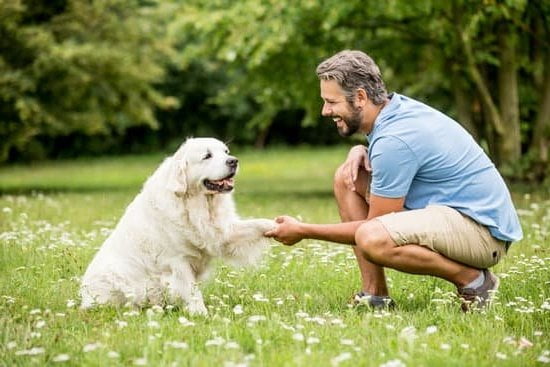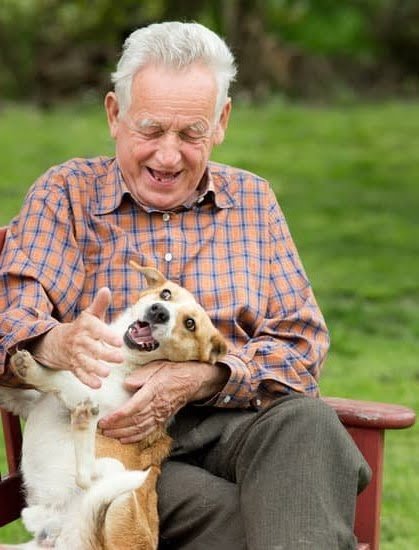Must Love Dogs: Dog Training is essential for every dog owner. Training your furry friend is not just about teaching them tricks and obedience, but it is also crucial for their safety, well-being, and the harmony of your household. In this article, we will explore the various aspects of dog training, from basic techniques to advanced training, and how to tailor your approach based on your dog’s behavior and personality.
Training your dog is a fundamental part of being a responsible pet owner. Well-trained dogs are not only a joy to be around but also safer and happier. From basic commands like sit and stay to more complex tasks such as agility and obedience, training plays a significant role in creating a strong bond between you and your canine companion. Understanding the importance of training for dogs goes hand in hand with truly loving dogs.
One key aspect that cannot be ignored when it comes to dog training is understanding your dog’s behavior and tailoring the training to their specific needs and personality. Each dog is unique, with its own set of traits and tendencies. Therefore, it’s important to take a personalized approach to training in order to achieve the best results.
Additionally, knowing when positive reinforcement or punishment is appropriate can make all the difference in your dog’s willingness to learn and comply with commands. This section will delve into these essential aspects of effective and compassionate dog training.
Basic Dog Training Techniques
When it comes to dog training, mastering the basics is essential for creating a well-behaved and obedient pet. Whether you have a new puppy or an older dog that needs some behavior modification, understanding the fundamental training techniques is crucial.
Here are some basic dog training techniques that every pet owner must know:
1. Sit: Teaching your dog to sit on command is one of the first and most important lessons. This command can help control your dog in various situations, such as when guests arrive or during meal times.
2. Stay: Training your dog to stay in one place until released is essential for their safety. It prevents them from running into dangerous situations or bolting out the door when it’s opened.
3. Come: The “come” command is vital for getting your dog’s attention and calling them back to you, especially in distracting or emergency situations.
4. Leash Walking: Teaching your dog to walk politely on a leash without pulling is important for their safety and for enjoyable walks together.
These basic commands form the foundation of good behavior and pave the way for more advanced training. Consistency, patience, and positive reinforcement are key components of successful dog training. Remember that every dog learns at their own pace, so be patient and celebrate small victories along the way.
Understanding Your Dog’s Behavior
Observing Your Dog’s Behavior
Before you start training your dog, it’s essential to observe and understand their behavior. Each dog has its own unique personality, and it’s vital to tailor the training to fit their individual needs. Take note of how your dog reacts to different situations, people, and other animals. This will help you determine the best approach to training for your furry friend.
Recognizing Behavioral Patterns
By recognizing behavioral patterns in your dog, you can identify any specific challenges or issues that may arise during training. For example, if your dog becomes anxious around new people or exhibits fear-based aggression, it’s crucial to address these behaviors with specialized training techniques. Understanding your dog’s behavior will enable you to create a customized training plan that takes into account their unique personality traits.
Using Positive Reinforcement
When tailoring training to fit your dog’s needs and personality, positive reinforcement is key. By using rewards such as treats, praise, and playtime, you can motivate and encourage good behavior in your dog. Positive reinforcement not only helps with obedience training but also strengthens the bond between you and your pet. Understanding how to effectively use positive reinforcement based on your dog’s behavior will lead to a more successful training experience overall.
Understanding your dog’s behavior is an essential aspect of successful dog training. By observing their behavior, recognizing behavioral patterns, and using positive reinforcement tailored to their needs and personality, you can create a customized training plan that will lead to well-behaved and happy dogs.
Positive Reinforcement vs Punishment
When it comes to training your furry friend, positive reinforcement is often touted as the most effective and humane approach. This involves rewarding good behavior with treats, praise, or playtime, while ignoring or redirecting undesired behavior. This method not only helps to build a strong bond between you and your dog but also encourages a willingness to learn and obey commands.
On the other hand, punishment-based training can lead to fear, anxiety, and even aggression in dogs. It can damage the trust between you and your pet and result in long-term behavioral issues.
To incorporate positive reinforcement into your training routine, consider using the following techniques:
- Clicker Training: Using a clicker to signal desirable behavior followed by a treat.
- Marker Training: Using a verbal marker such as “yes” or “good” followed by a reward.
- Food Rewards: Treats can be an effective motivator for most dogs during training sessions.
In contrast, punishment-based techniques such as yelling, physical corrections, or shock collars should be avoided. Research has shown that these methods can not only be detrimental to your dog’s well-being but also have limited long-term effectiveness. By embracing the power of positive reinforcement, you can create a happy and obedient companion who is eager to learn and please you.
Additionally remember that each dog is unique and may respond differently to various training methods. Some pups are highly motivated by food rewards while others may prefer playtime or praise. It’s important to tailor your approach based on your dog’s individual personality and needs. Consistency, patience, and understanding are key when it comes to finding the best way to communicate with your furry friend through training.
Advanced Training
Once your furry friend has mastered the basic commands like sit, stay, and come, it’s time to take their training to the next level. Advanced training for dogs includes teaching them tricks, agility, and obedience. This not only provides mental stimulation for your dog but also strengthens the bond between you and your furry companion.
Trick training is a fun way to engage with your dog and showcase their intelligence and willingness to learn. Tricks can range from simple ones like shake or roll over to more complex ones like playing dead or crawling. Trick training can also be a great way to impress friends and family with your dog’s abilities.
Agility training involves navigating through obstacles such as tunnels, weave poles, and A-frames. It not only provides physical exercise for your dog but also enhances their coordination and confidence. Obedience training at an advanced level focuses on off-leash commands, impulse control, and manners in various environments.
According to the American Kennel Club (AKC), some of the popular advanced tricks that dogs can learn include jumping through hoops, balancing objects on their nose or head, spinning in circles, playing basketball with a mini hoop or even learning a backflip. These tricks are not just entertaining but also serve as a way to keep our furry friends occupied and mentally stimulated.
| Trick | Description |
|---|---|
| Jumping through Hoops | Dogs leap through hoops suspended in midair. This trick showcases athleticism. |
| Balancing Objects | Dogs balance items like balls or sticks on their nose or head without dropping them. |
| Spinning in Circles | Dogs spin around in circles on command. It’s entertaining as well as excellent for building focus. |
Training for Specific Needs
Service Dogs
Service dogs play a crucial role in assisting individuals with disabilities by performing tasks that the person cannot do for themselves. Training a service dog requires specialized skills and techniques to ensure they can effectively help their handlers.
This type of training involves teaching the dog to perform specific tasks such as guiding the handler, alerting them to sounds, retrieving items, and providing physical support. It is essential for service dogs to undergo extensive obedience training and socialization to ensure they can work well in various environments.
Emotional Support Animals
Emotional support animals provide comfort and support to individuals struggling with mental health issues. While emotional support animals do not require the same level of training as service dogs, basic obedience and good behavior are still important.
These animals should be able to remain calm and well-behaved in public settings where their owners may need their support. In addition to obedience training, it’s crucial for emotional support animals to be well-socialized and comfortable around different people and environments.
Therapy Dogs
Therapy dogs are trained to provide comfort, affection, and companionship in various settings such as hospitals, schools, and nursing homes. Their training focuses on obedience, good manners, and being comfortable in different environments while remaining calm around strangers. They also need to be able to handle being touched or petted by multiple people without becoming anxious or overly excited. Additionally, therapy dogs must undergo special certification programs to ensure they meet the specific requirements for their role.
When training any of these types of working dogs, it’s essential to seek guidance from experienced professionals who understand the unique needs and responsibilities of these roles. The bond between these special dogs and their handlers is based on trust, reliability, and mutual respect; therefore, professional trainers who specialize in this area can help ensure that both the dog’s welfare and their owner or handler’s needs are fully met.
Overcoming Training Challenges
Training a dog can be a rewarding experience, but it also comes with its challenges. Dealing with stubbornness, fear, and aggression in dogs can be overwhelming for pet owners. However, understanding the root causes of these behaviors and implementing the right training techniques can make a significant difference in overcoming these challenges.
Stubbornness in dogs can often stem from a lack of consistency in training or a misunderstanding of what is expected of them. In these cases, positive reinforcement and patience are key to breaking through their stubborn behavior. Using treats, praise, and consistent commands can help motivate your dog to follow through with the desired behavior.
Fearful behavior in dogs can be the result of past trauma or lack of socialization. It’s important to approach training with empathy and understanding, gradually exposing them to new environments and experiences at their own pace. Creating a safe and secure environment for your dog and using gentle encouragement during training sessions can help build their confidence and alleviate fearful behaviors.
Dealing with aggression in dogs requires careful consideration and professional guidance. Aggression can be triggered by various factors such as fear, resource guarding, or territoriality. Seeking the help of a certified dog trainer or animal behaviorist is crucial in addressing aggressive behavior in dogs effectively. Understanding the underlying cause of aggression and implementing positive reinforcement techniques tailored to your dog’s specific triggers are essential steps in managing and modifying their behavior.
| Training Challenges | Effective Solutions |
|---|---|
| Stubbornness | Consistency in training, positive reinforcement |
| Fearful Behavior | Empathy, gradual exposure, gentle encouragement |
| Aggression | Professional guidance, positive reinforcement tailored to triggers |
Choosing the Right Trainer
In conclusion, training is an essential part of ensuring that our canine companions fit well into our lives and society. “Must love dogs” should also mean committing to providing them with the proper training they need to thrive.
Whether it’s basic obedience or advanced tricks, understanding your dog’s behavior and needs is crucial in tailoring their training experience. It’s important to remember that every dog is unique, so finding the right balance between positive reinforcement and discipline is key in achieving successful results in training.
When it comes to choosing a trainer for your furry friend, it’s vital to find a professional who genuinely understands the concept of “must love dogs.” The right trainer should have a deep appreciation and respect for dogs and their individual personalities. They should also prioritize positive reinforcement techniques over punishment, fostering a nurturing environment that encourages learning and growth for your pet.
Ultimately, investing time, effort, and resources into proper dog training benefits both you and your beloved pet. A well-trained dog is not only a joy to be around but also essential for their safety and well-being.
Properly trained service dogs, emotional support animals, therapy dogs, or simply well-behaved companions can have a tremendous impact on our lives. In the end, by finding the right trainer and embracing the principles of “must love dogs,” we can ensure that our furry friends receive the best care possible through effective training methods.
Frequently Asked Questions
What Breed Is the Dog in Must Love Dogs?
The dog in “Must Love Dogs” is a Newfoundland. This breed is known for its gentle nature, intelligence, and strength. It’s a large and powerful dog with a sweet temperament, making it a great fit for the film’s storyline.
What Is the Best Age to Send a Dog to Training?
The best age to send a dog to training is around 7-8 weeks old. At this age, puppies are more receptive to learning and socializing. However, older dogs can still benefit from training, as they are capable of learning new behaviors at any age.
What Is the Secret to Training a Dog?
The secret to training a dog lies in consistency, patience, and positive reinforcement. Consistency helps the dog understand what is expected of them, while patience allows the trainer to work through any challenges that may arise.
Additionally, using positive reinforcement such as treats or praise can motivate the dog to repeat good behavior. This creates a strong bond between the trainer and the dog and makes the training process more effective overall.

Welcome to the blog! I am a professional dog trainer and have been working with dogs for many years. In this blog, I will be discussing various topics related to dog training, including tips, tricks, and advice. I hope you find this information helpful and informative. Thanks for reading!





